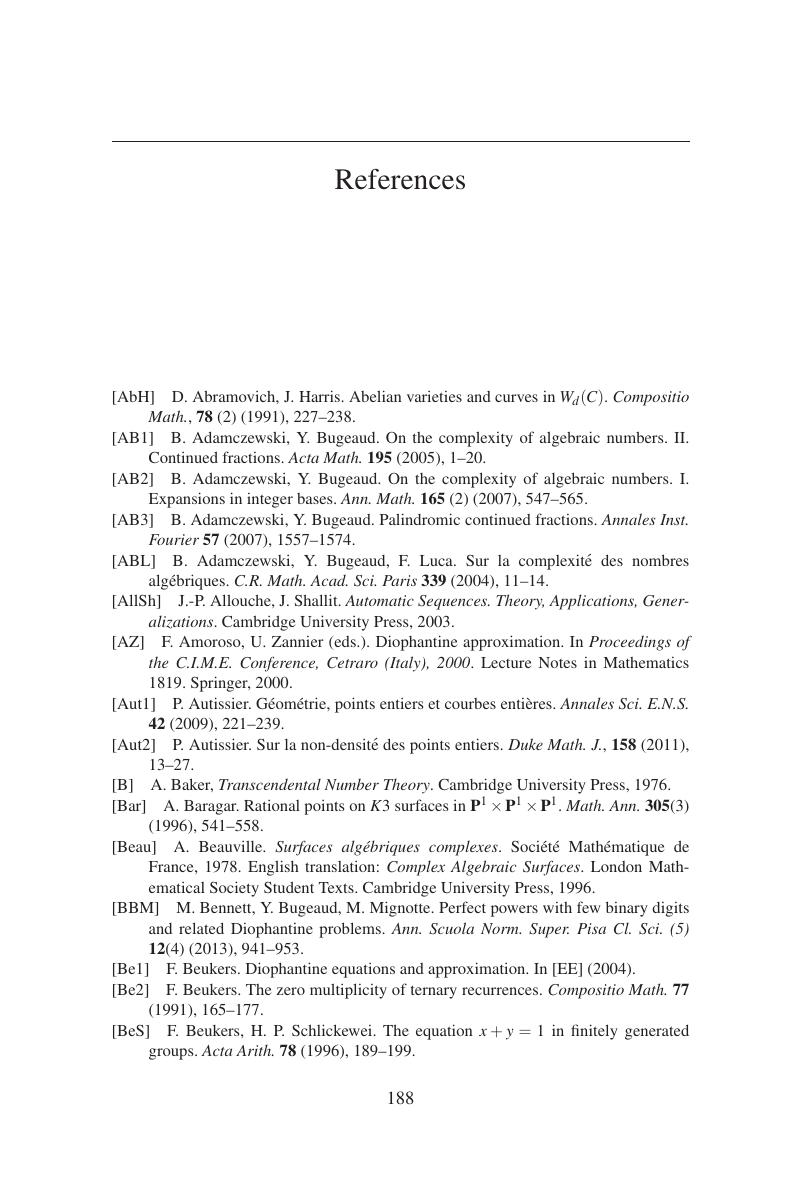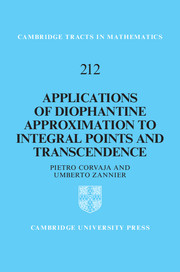Book contents
- Frontmatter
- Contents
- Preface
- Notation and Conventions
- Introduction
- 1 Diophantine Approximation and Diophantine Equations
- 2 Schmidt’s Subspace Theorem and S-Unit Equations
- 3 Integral Points on Curves and Other Varieties
- 4 Diophantine Equations with Linear Recurrences
- 5 Some Applications of the Subspace Theorem in Transcendental Number Theory
- References
- Index
- References
References
Published online by Cambridge University Press: 08 June 2018
- Frontmatter
- Contents
- Preface
- Notation and Conventions
- Introduction
- 1 Diophantine Approximation and Diophantine Equations
- 2 Schmidt’s Subspace Theorem and S-Unit Equations
- 3 Integral Points on Curves and Other Varieties
- 4 Diophantine Equations with Linear Recurrences
- 5 Some Applications of the Subspace Theorem in Transcendental Number Theory
- References
- Index
- References
Summary

- Type
- Chapter
- Information
- Publisher: Cambridge University PressPrint publication year: 2018



